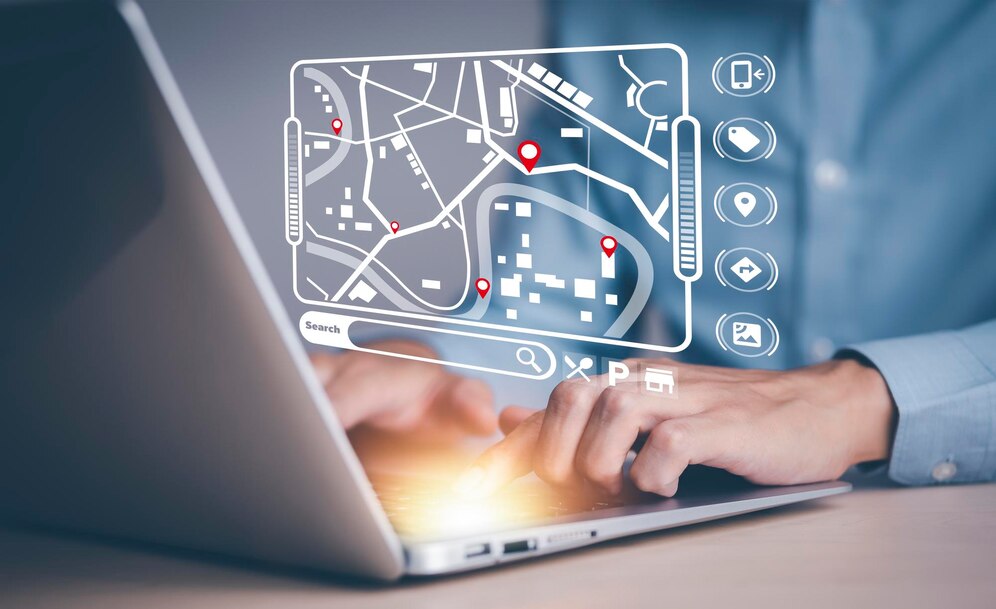In the interconnected world of technology, accurate geolocation services have grown from being a luxury to a necessity. Navigating the global landscape has become heavily reliant on pinpointing precise locations, and at the heart of this seamless navigation lies the GeoLocation API. This comprehensive exploration delves into the capabilities, applications, and advantages of the Supreme GeoLocation API, elucidating its pivotal role in revolutionizing various industries.
What Is Geolocation API?
The Geolocation API is an effort that one undertakes by the wide web consortium to standardize the interface and then retrieve the geographical location of a device on the client’s side. It is a service that accepts the HTTP requests with the cell tower as well as the wide access point that one mobile client can detect. It allows users to give their location to the application if they want.
Geolocation API: Features, Applications, More
This section discusses some of the important features and applications of geolocation APIs.
I. Beacon Of Accuracy, Versatility, And Innovation
In an era where location-based services have revolutionized the way we interact with technology, the Best GeoLocation API emerges as a beacon of accuracy, versatility, and innovation. This API is a testament to the continuous advancements made in the field of geolocation, ensuring that businesses, individuals, and applications can seamlessly access, analyze, and utilize location data with unparalleled precision.
Ii. The Power Of Supreme Geolocation API
Seamless Accuracy: The hallmark of the Supreme GeoLocation API is its ability to provide exceptionally accurate location data. By amalgamating data from various sources such as GPS, Wi-Fi, and cellular networks, it offers a comprehensive and precise location overview. This accuracy is crucial in scenarios where precision is paramount, such as navigation in densely populated urban areas and guiding emergency responders to critical situations.
Global Reach:
The Supreme GeoLocation API transcends geographical boundaries, offering worldwide coverage. It functions seamlessly across continents, enabling applications to provide consistent and reliable location services regardless of the user’s location.
Real-time Updates:
In an age where immediacy is valued, the Supreme GeoLocation API delivers real-time location updates. This capability is indispensable in applications such as ride-sharing, asset tracking, and delivery services, where knowing the exact location of vehicles or items is imperative.
Efficiency in Energy Consumption:
The API optimizes energy consumption while maintaining accuracy. This attribute is particularly significant for mobile devices with limited battery life and IoT devices that need to operate for extended periods.
Iii. Applications Across Diverse Industries
The versatility of the GeoLocation API is showcased through its transformative impact on various industries:
Navigation and Mapping:
Accurate geolocation is at the heart of navigation applications. The API’s precision ensures users are guided flawlessly, whether through bustling city streets or remote rural areas. This level of accuracy elevates user experience and empowers businesses to develop innovative location-based services.
E-Commerce and Retail:
Location-based marketing has witnessed a surge in relevance. The Supreme GeoLocation API enables retailers to offer personalized promotions and recommendations based on a user’s location, enhancing customer engagement and driving sales.
Logistics and Fleet Management:
In the logistics sector, optimizing routes and managing fleets efficiently is paramount. The API’s real-time tracking facilitates streamlined operations, reducing delivery times, and minimizing costs.
Emergency Services:
During emergencies, swift and precise location information can be a matter of life and death. The Supreme GeoLocation API aids emergency services in locating individuals in distress rapidly, expediting response times.
Augmented Reality (AR) and Virtual Reality (VR):
The API’s accuracy is pivotal in AR and VR applications that merge the virtual and physical worlds. This fusion offers immersive experiences, from location-based games to virtual tourism.
Iv. Privacy And Security Considerations
While the capabilities of the GeoLocation API are impressive, the potential for misuse and invasion of privacy is a concern. To address this, robust privacy controls and transparent data usage policies are essential. Users must have the ability to control their location sharing and be informed about how their data is being utilized.
V. Developer Empowerment
The GeoLocation API follows a developer-friendly approach. Extensive documentation, software development kits (SDKs), and dedicated support resources empower developers to integrate geolocation services seamlessly into their applications. This accessibility encourages innovation and fosters the creation of new location-driven solutions.
VI. IP Address
One of the major applications of the Geolocation AIP is determining the position information of an entity. They are used more for the sake of navigating the targeted market. Another important element that marks the success of these APIs is that they allow the users to request locational data from the servers with the help of diverse request formats.
The user here makes access to the application, thereby offering a user interface. It allows for displaying the information in the form of a map. The particular service pinpoints the IP address and truck’s sef positioning detail.
VII. Cell Towers And WiFi Points
Another way through which you can make the bes use of the Geolocation APIs is the use of the Cell Towers and WIFI points. The user’s device produces radio signals, which are picked up by Wi-Fi entities and Cells. Thereafter, the servers return to the position in the form of latitudes and longitude degrees as they value to map the location. Then, you have the accuracy radius that defines the circular boundaries.
VIII. Global Positioning Systems
The GPS or the Global Positioning system is derived by the API. The AIP in the GPS system makes sure that the request positions obtain a response from the server holding satellite data. They include the time signals and the satellite positions. It determines the relative positioning of the required devices so that they can easily identify the position. This is an important aspect of the ensure system. The GPS location methods offer high accuracy.
The Future Horizons
Looking ahead, the GeoLocation API is poised for further advancement. The integration of advanced machine learning algorithms and artificial intelligence could enhance predictive accuracy. Additionally, the API might incorporate more indoor mapping data, opening doors for applications in IoT, smart buildings, and beyond.
Read More:




























